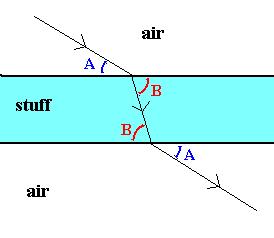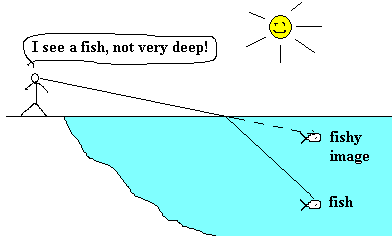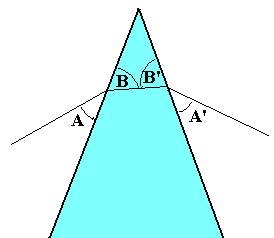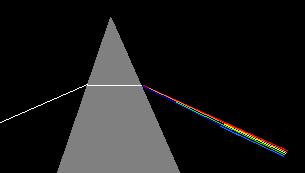
The angle B (inside the medium) is greater (closer to being a right angle) than the angle A (outside), but their numerical relationship depends on the material. Different materials cause different angles. For instance light passing from air into water deflects a certain amount, while light passing from air into glass bends a different amount. Regardless of how much the light is actually deflected, this idea is already enough to explain why a clear lake is deeper than it looks. In the picture, the light that reaches our eye from the fish is deflected when it leaves the water and enters the air. But our brain imagines that it came to us in a straight line, without the bend at the surface. So it appears that the fish is higher in the water than it actually is.

It also explains why light changes direction when it goes through a prism.

